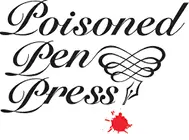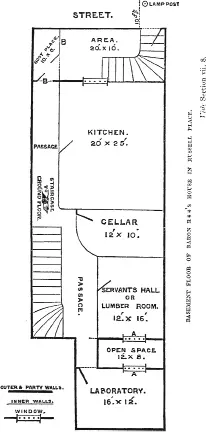The Notting Hill Mystery
The Notting Hill Mystery
Compiled by Charles Felix
Author of ‘Velvet Lawn’
from the papers of the late R. Henderson, Esq.
with an Introduction by Mike Ashley
Poisoned Pen Press

Copyright
First published in 1865
Copyright © 2015
Published by Poisoned Pen Press in association with the British Library
First E-book Edition 2015
ISBN: 9781464204814 ebook
All rights reserved. No part of this publication may be reproduced, stored in, or introduced into a retrieval system, or transmitted in any form, or by any means (electronic, mechanical, photocopying, recording, or otherwise) without the prior written permission of both the copyright owner and the publisher of this book.
The historical characters and events portrayed in this book are inventions of the author or used fictitiously.
Poisoned Pen Press
6962 E. First Ave., Ste. 103
Scottsdale, AZ 85251
www.poisonedpenpress.com
[email protected]
Contents
The Notting Hill Mystery
Copyright
Contents
Map
Introduction
The Notting Hill Mystery
The CaseSection I
Section II
Section III
Section IV
Section V
Section VI
Section VII
Section VIII
More from this Author
Contact Us
Map

Introduction
Seeking the Evidence
According to the late, great aficionado of crime fiction, Julian Symons, writing in 1972, there is ‘no doubt’ that The Notting Hill Mystery is ‘the first detective novel’. Any such absolute statement is bound to be challenged, and there are certainly other contenders so it is worth exploring the book’s position in the evolution of the detective story in order to understand its significance.
First we need to fix a date. A quick check of the title page of this book states that it was published by Saunders, Otley & Co., in London in 1865, but we can go back further. It was first published as a serial, with no author credit, in Once a Week, from 29 November 1862 to 17 January 1863. That serial was illustrated by George Du Maurier (1834–1896), the author of Trilby (1894) and grandfather of author Daphne Du Maurier, and his illustrations are reprinted here.
The 1860s was a period of awakening for the detective novel. The best known of all the early works, The Moonstone by Wilkie Collins (1824–1889) was published in 1868 after it had been serialised in All the Year Round from January to August of that year. It features Sergeant Cuff who is brought in to find a stolen sacred Indian diamond. He is solid, reliable and thorough, a man of morals, who not only solves the case through methodical investigation, but ensures that the diamond is restored to its rightful home. By the time of The Moonstone the detective novel had become established, but what were its antecedents?
Collins’s novel appeared at least five years after The Notting Hill Mystery and plenty of other books and stories featuring detectives had appeared by then. Perhaps the best known is Bleak House by Charles Dickens (1812–1870) originally issued in monthly parts between March 1852 and September 1853. This introduces us to Inspector Bucket ‘of the Detective’, a wonderfully portrayed character who glides through the pages of the novel just like he slips through the dark and dangerous world of Victorian London, enquiring of the underworld, observing, thinking before he acts, and in every way a true detective. He was modelled to a large degree on a real police detective, Inspector Field. Yet, despite Bucket’s noticeable presence in Bleak House, his investigations into the death of Mr Tulkinghorn revolve around one of Dickens’s many subplots and are not central to the book. One could not describe Bleak House as a detective novel, even though it is very evidently a novel featuring a detective.
There had been plenty of short stories involving investigations into crimes, such as ‘Das Fräulein von Scuderi’ (1819) by E.T.A. Hoffmann (1776–1822), which involves the eponymous lady investigating the innocence of a man arrested for murder. The Fräulein does not solve the crime herself though her pursuit of the truth does lead to the revelation, so she may be seen as an ancestor of the female detective.
The first true literary detective, as we would recognise him, is C. Auguste Dupin, created by Edgar Allan Poe (1809–1849), who appears in three short stories, starting with ‘The Murders in the Rue Morgue’ (1841). Dupin is quite rightly regarded as the true ancestor of Sherlock Holmes, and though he does not earn his living from detection, Dupin is recognised as an expert by the Prefect of Police in Paris and his advice is sought whenever there is an unusual or particularly baffling crime. Poe can justifiably be credited with creating the first modern independent detective, but he did not write a detective novel.
The fact that Poe set his stories in France is because France had become closely associated with the idea of a private detective ever since the days of Eugène François Vidocq (1775–1857), a one-time thief who turned gamekeeper and set up the first plain-clothed investigative unit, the Brigade de la Sûreté, in 1811. The story of his life and the establishment of the Brigade was told in Mémoires de Vidocq, published in four volumes during 1828–29. This book, which no doubt embellished the truth with vigorous literary licence was a huge influence on early crime fiction. It was translated into English almost before the ink was dry. An industry erupted, in the English penny dreadfuls, the French sensational literature and the American story papers, of retelling stories (mostly fabricated) from police sources.
Its influence can be seen in the many ‘casebook’ reminiscences that appeared in subsequent years. One of the earliest was by a forgotten British writer, William Russell (1807–1877), who produced a series of stories for Chambers’s Edinburgh Journal under the alias ‘Waters’, purporting to be first-person accounts of a London detective. These first made it into book-form in America as The Recollections of a Policeman in 1852 and in Britain as Recollections of a Detective Police-Officer in 1856. These were immensely popular, especially in America, where the image of the private detective was further enhanced by the media-hype around the first private detective agency established by Allan Pinkerton (1819–1884) in 1850.
1 comment